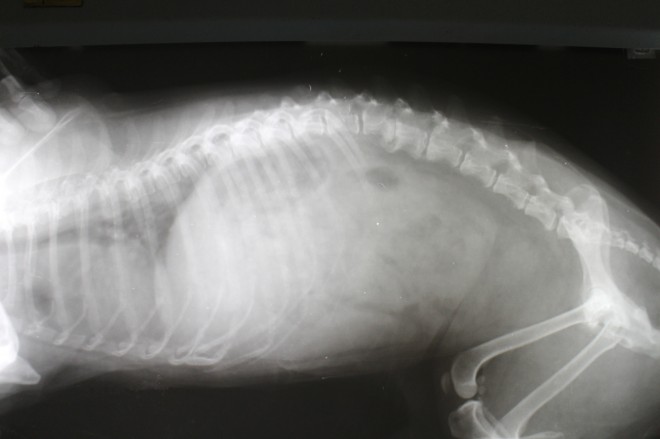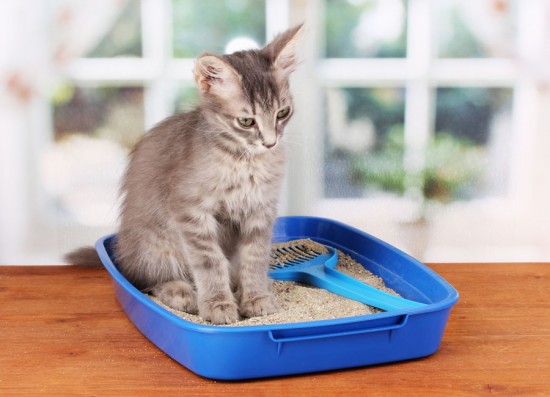
Spaying or Neutering Is Good for You, Your Pet & Your Community!
It:
Helps dogs and cats live longer, healthier lives.
Eliminates the possibility of uterine or ovarian cancer and
greatly reduces the incidence of breast cancer, particularly
when your pet is spayed before her first estrous cycle.
Eliminates the heat cycle for female cats and dogs. Estrus lasts
an average of six to 12 days, often twice a year, in dogs and an
average of six to seven days, three or more times a year, in
cats.
Eliminates testicular cancer and decreases the incidence of
prostate disease.
Makes pets better, more affectionate companions.
Makes cats less likely to spray and mark territory.
Helps stop the proliferation of viral disease, like feline
leukemia and feline immunodeficiency virus.
Makes pets less likely to roam the neighborhood, run away, or
get into fights.
Ignore the myths!
FACT: Spaying or neutering will not make your pet gain weight
and become lazy.
FACT: It is not better to have one litter first! Medical
evidence indicates just the opposite. In fact, the evidence
shows that females spayed before their first heat are typically
healthier.
FACT: Your wonderful pet’s offspring won’t be a carbon copy.
Professional animal breeders who follow generations of
bloodlines can’t guarantee they will get just what they want out
of a particular litter. A pet owner’s chances are even slimmer.
In fact, an entire litter of puppies or kittens might receive
all of a pet’s (and her mate’s) worst characteristics.
FACT: It’s less expensive to have you pet spayed or neutered
than having a litter and ensuring the health of the mother and
litter; two months of pregnancy and another two months until the
litter is weaned can add up to significant veterinary bills and
food costs if complications develop.
FACT: Animals should not have litters simply so children can
experience the miracle of birth! Even if children are able to
see a pet give birth–which is unlikely, since it usually occurs
at night and in seclusion–the lesson they will really learn is
that animals can be created and discarded as it suits adults.
Instead, it should be explained to children that the real
miracle is life and that preventing the birth of some pets can
save the lives of others.
FACT: Even purebred litters contribute to pet overpopulation -
at least one out of every four pets brought to animal shelters
around the country are purebred. There are just too many dogs
and cats–mixed breed and purebred alike.
FACT: Spaying or neutering does not affect a dog’s natural
instinct to protect home and family. A dog’s personality is
formed more by genetics and environment than by sex hormones.
FACT: Pets don’t have any concept of sexual identity or ego.
Neutering will not change a pet’s basic personality. He doesn’t
suffer any kind of emotional reaction or identity crisis when
neutered.
FACT: More than 25 million kittens and puppies are born in the
US each year. (That’s about the human population of Indiana,
Michigan, Missouri, and Minnesota combined!)
FACT: In the US alone, more than 3-5 million animals must be
euthanized in shelters each year. That’s half of the 6-10
million animals brought into shelters each year.
FACT: You may find homes for all of your pet’s litter. But each
home you find means one less home for the dogs and cats in
shelters who need good homes. Also, in less than one year’s
time, each of your pet’s offspring may have his or her own
litter, adding even more animals to the population. The problem
of pet overpopulation is created and perpetuated one litter at a
time.
FACT: You should call to speak with a veterinarian if you have
any questions or concerns regarding having your pet spayed or
neutered!
The above is general veterinary information. Do not begin
any course of treatment without consulting your regular
veterinarian. All animals should be examined at least once every
12 months.
 Should I Train My Dog Before Or After Taking Them For A Walk?
Should I Train My Dog Before Or After Taking Them For A Walk?
 The best thing that needs to be learnt about pets
The best thing that needs to be learnt about pets
 More Information On Dog (canine) X-rays
More Information On Dog (canine) X-rays
 Can You Tell The Difference Between Normal Play And Aggressive Play In Dogs?
Can You Tell The Difference Between Normal Play And Aggressive Play In Dogs?
 Ragwort – What Every Horse Owner Should Know
Ragwort – What Every Horse Owner Should Know
 Preventing And Removing Pet Odour From The Home
Preventing And Removing Pet Odour From The Home
Copyright © 2005-2016 Pet Information All Rights Reserved
Contact us: www162date@outlook.com